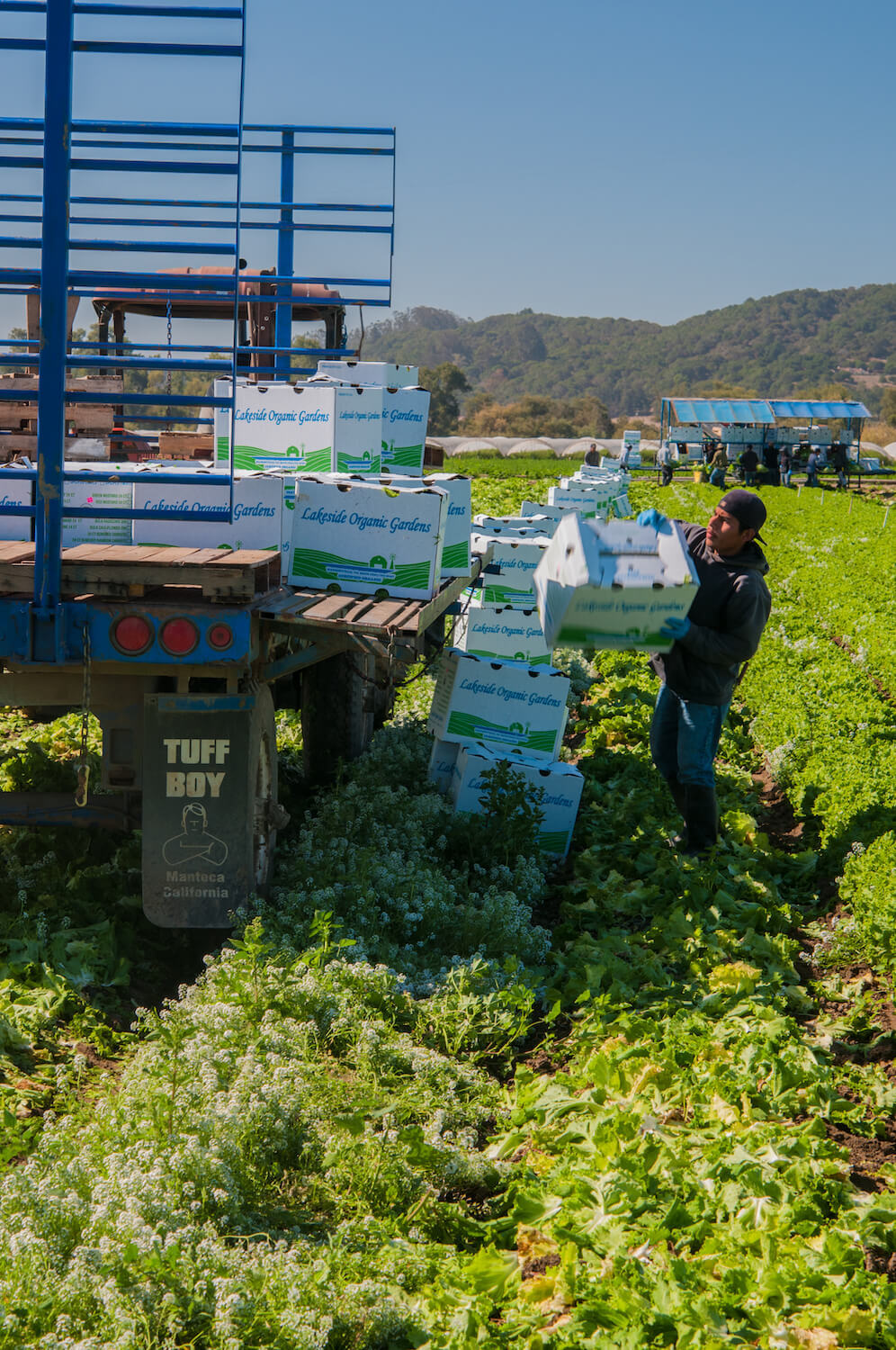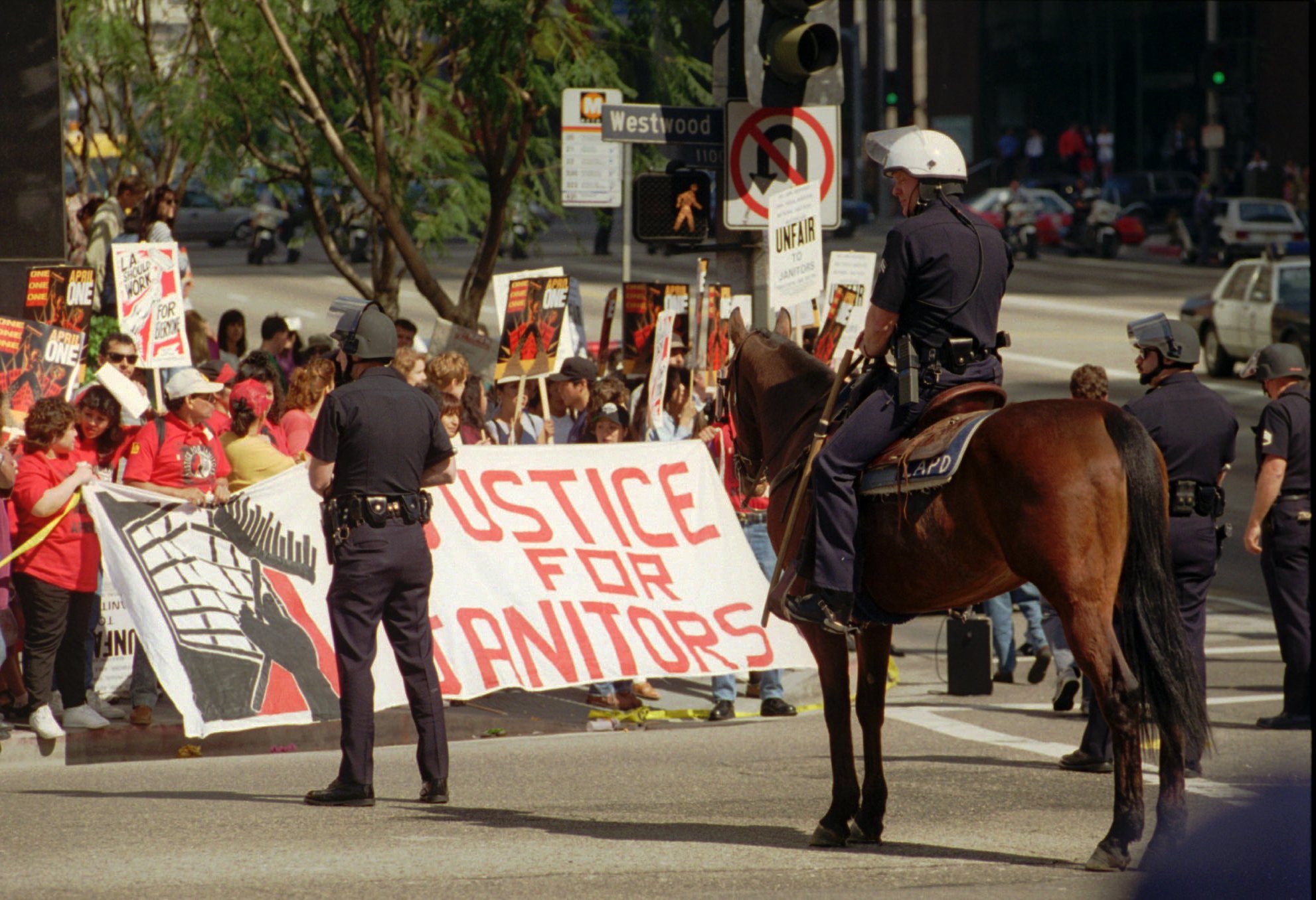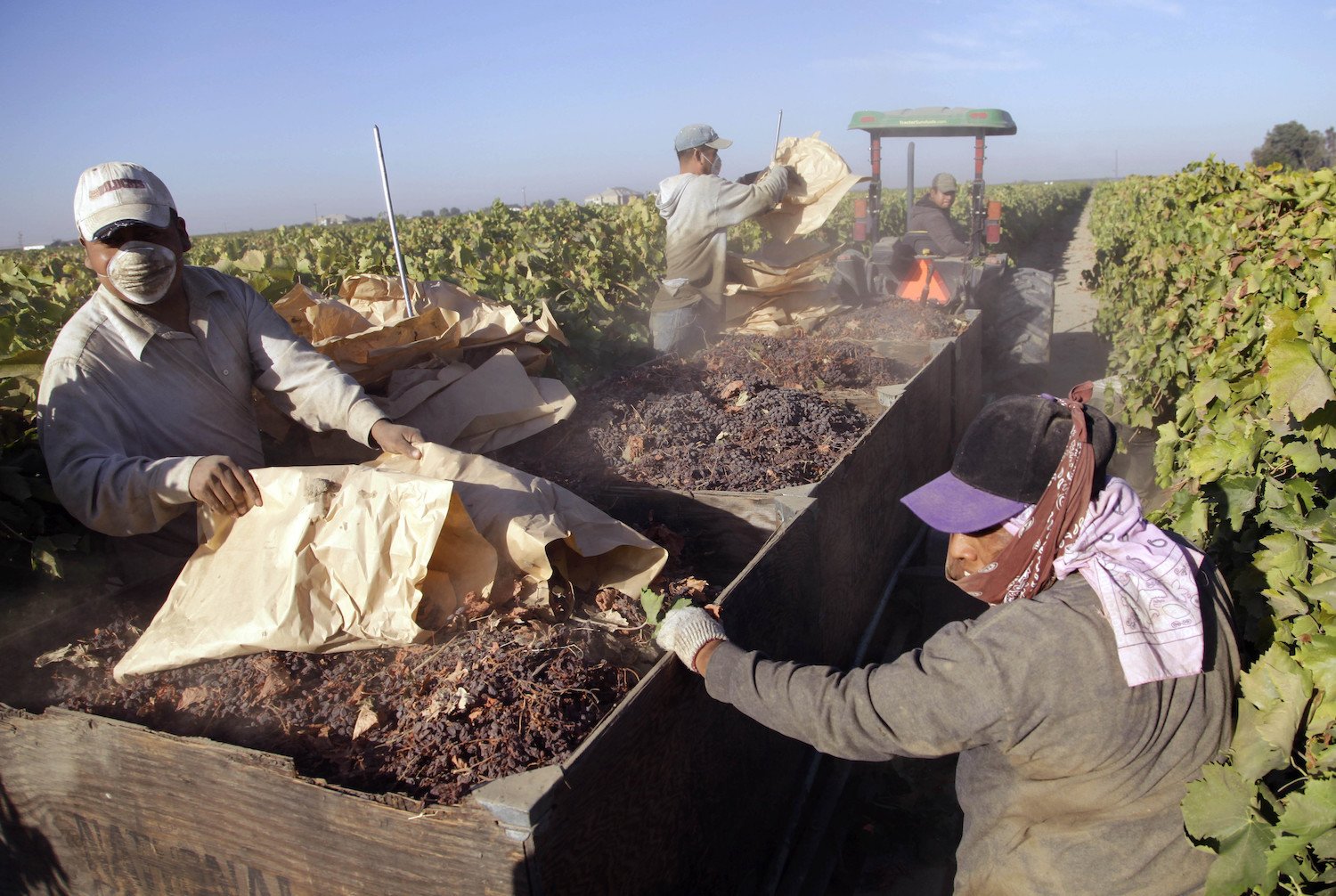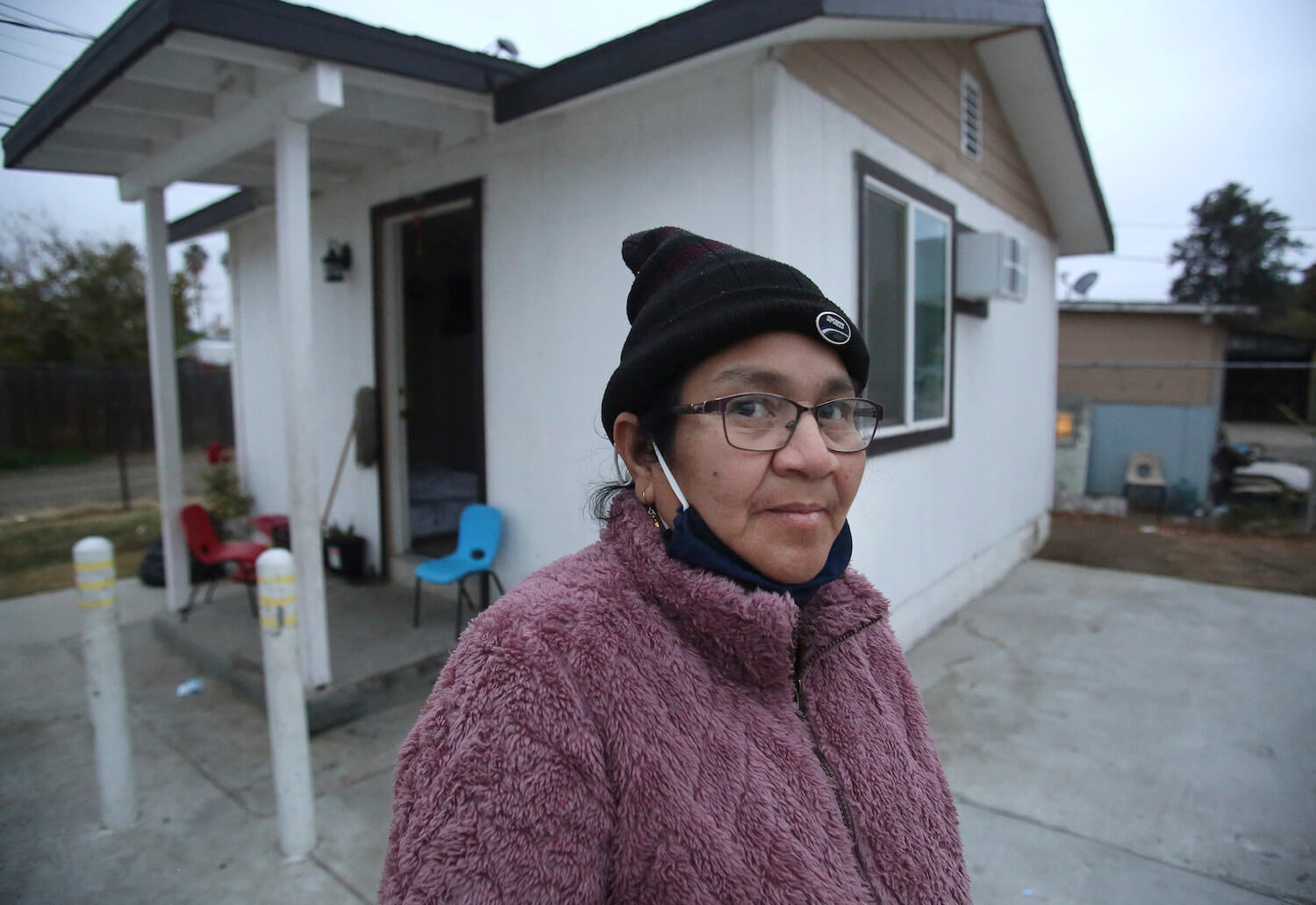
Photo by Brent Stirton/Getty Images
Experts say a policy change is both fair and feasible. When will it happen?
Last year, New York joined a handful of other states, including California, Minnesota, Hawaii, Washington, and Maryland in granting overtime pay to farm workers. Yet as the law took effect on January 1, 2020, there was already a hitch: Workers would only receive time-and-a-half pay after they had already worked a 60-hour week, 20 hours higher than the threshold that governs virtually all other categories of employees in the United States.
At the end of 2020, a state board convened to consider lowering the threshold to 40 hours. The three-person panel, comprised of a former union leader, the president of the pro-business New York Farm Bureau, and a member appointed by Governor Andrew Cuomo’s administration, decided to keep the threshold at 60 hours this year, citing pandemic-related uncertainty and rejecting a counter-proposal brought by former union leader Denis Hughes to gradually lower it over the next decade, according to Politico Pro. The board announced it will reconsider the threshold in November at the earliest.
“The wage board, in my opinion, was derelict in its duty to protect workers, Covid or not Covid,” said Lisa Zucker, legislative attorney for the New York Civil Liberties Union. “No other businesses got to say, ‘oh my gosh, it’s Covid, I’m barely surviving—so please, New York, exclude me from paying overtime.’”
“The wage board, in my opinion, was derelict in its duty to protect workers, Covid or not Covid.”
The wage board’s decision marks the most recent setback in a decades-long campaign by activists and labor advocates to secure basic protections for farm workers in the state, but it’s also indicative of a long-term dynamic nationwide: Farm workers were excluded from the Fair Labor Standards Act (FLSA) back in 1938, the result of a political compromise to secure the votes of Southern Democrats who represented farmers who relied on cheap Black labor. Decades later, the vast majority of states have still not extended overtime pay to farm workers.
Now, for the first time in years, it seems possible that efforts to reverse the Depression-era carveout might gain political traction at the federal level. Vice President-elect Kamala Harris has twice introduced legislation, dubbed the Fairness for Farm Workers Act, which would mandate overtime for farm workers and end a handful of additional minimum-wage and overtime exemptions. Her home state of California passed overtime pay for farm workers in 2016. Its plan involves gradually reducing the hourly threshold by five hours per year until it hits 40 hours in 2022. President-elect Joe Biden endorsed the policy during his campaign.
The 1938 Fair Labor Standards Act established several of the workplace protections that continue to define work in the U.S. today: The minimum wage, the 40-hour work week, overtime pay, a ban on child labor. The bill faced intense opposition from Southern senators who had long relied on “a fully exploitable black population to provide cheap labor,” writes Juan F. Perea of Loyola University Chicago in his 2011 paper “Echoes of Slavery: Recognizing the Racist Origins of the Agricultural and Domestic Worker Exclusion from the National Labor Relations Act.” Arguing against the bill, Senator “Cotton” Ed Smith of South Carolina said that “any man on this floor who has sense enough to read the English language knows that the main object of this bill is, by human legislation, to overcome the splendid gifts of God to the South.”
In 1938, farm workers were excluded from the Fair Labor Standards Act as a result of a political compromise, relying on cheap Black labor. Decades later, the majority of states have still not extended overtime pay to farm workers.
According to Perea, President Franklin Delano Roosevelt initially intended to include all workers in the bill. His administration only agreed to exclude farm workers and domestic workers from the legislation when it became clear that the bill would not pass without Southern support. “Congress acquiesced in, and in effect endorsed, Southern racism by making a Faustian pact to exclude black employees by proxy to enable the passage of New Deal legislation,” Perea wrote.

Bob Nichols/USDA
Vice President-elect Kamala Harris has twice introduced legislation, dubbed the Fairness for Farm Workers Act, which would mandate overtime for farm workers and end a handful of additional minimum-wage and overtime exemptions.
“This is the very definition of structural racism,” Zucker said, adding that while the demographics of farm workers have changed since the 1930s, the labor dynamics have not. “Generations of farmers have built their business plan on the underpayment of workers,” she said. Farm workers were finally granted minimum wage protections in 1966, and domestic workers now receive both minimum wage and overtime pay, with some exceptions.
More than 80 years have elapsed since the passage of New Deal legislation, but many of the arguments made by opponents of the FLSA are relevant today. A quote in Perea’s paper from Fred Brenckman, a Washington Representative of the National Grange, neatly summarizes the crux of today’s most prevalent argument against extending labor protections to farm workers: “If farm labor is poorly paid in the United States today, then it can be said with emphasis that the farmer and his family are still more poorly paid.”
[Subscribe to our 2x-weekly newsletter and never miss a story.]
Farm groups have long claimed that paying overtime is not feasible. They say that farm work is not like an office job—it can require intense effort in key harvest months, and very little during the winter. Further, tight profit margins in the food industry make it difficult to absorb added labor costs. In New York, farm groups hoping to maintain the 60-hour minimum wage threshold have warned that paying overtime would lead to the replacement of apple orchards with easy-to-harvest crops and the replacement of dairy workers with robotic milking machines. Worst of all, they say, the new regulations would force them to raise prices, ceding a competitive edge to growers in other states.
“Generations of farmers have built their business plan on the underpayment of workers.”
Despite the blustery rhetoric, the numbers tell a different story. Dr. Jeanette Wicks-Lim, associate research professor at the University of Massachusetts Amherst’s Political Economy Research Institute, recently conducted a cost-benefit analysis of extending overtime pay to all farm workers in the state. She found that overtime pay would increase labor costs by just 5 percent, representing an increase of just 2 percent of overall farm revenue.
At the same time, the bump would mean a lot to farm workers, who would see a wage increase of about 17 percent in weeks where they work overtime. “Among farm worker households, their levels of poverty are about double the average worker in the state. So there’s clearly a need to raise the labor standards of these workers who are doing what we are all recognizing as ‘essential work,’” she says.
Furthermore, farm labor costs in Massachusetts are relatively high. Wicks-Lim says the impact on farmers’ bottom line would likely be even lower in other states.
“Among farm worker households, their levels of poverty are about double the average worker in the state. So there’s clearly a need to raise the labor standards of these workers who are doing what we are all recognizing as ‘essential work.’”
So: Can farmers afford to pay their workers more? Wicks-Lim cautions that the word “afford” will be hotly disputed. Yet she has also done research on the minimum wage, and she says businesses have found ways to absorb similar increases in labor costs by shifting wage distribution, increasing prices, and slightly reducing profits. “What I’ve seen in the policy debates is any labor cost increase is considered to be too big. And that’s just not true in the way businesses operate,” she says. “The question really is: ‘What is the actual cost increase relative to their revenue? What are the adjustment mechanisms available to them?’” Consumers may be more amenable to paying a few more cents for a bushel of apples knowing that the farmworkers who picked them are being paid overtime. Or they may not notice the change: Food prices have already increased by more than 3 percent since the start of the pandemic.
Overtime for farm workers might be fair and feasible, but it remains to be seen whether Congress will make it happen. With Democratic control of the Senate, legislation may have a greater chance of passing at the federal level than at any point in the past decade. Yet Zucker predicts it’ll be an uphill battle. “We see this microcosm of it in New York, that senators from big ag states worry that they won’t get re-elected. That’s exactly the pressure we faced when we were trying to pass the initial Farm Labor Practices Act [of New York] in 2019. Agricultural workers and allies and advocates worked on that bill for 20 years,” she said. Zucker sees a similar dynamic playing out nationwide, with farm-state Democrats potentially siding with Republicans to oppose an overtime expansion.
“Senators from all those big ag states will say, ‘I can’t vote for this, the Farm Bureau is going to come and—they’re going to kill me,” she said.










